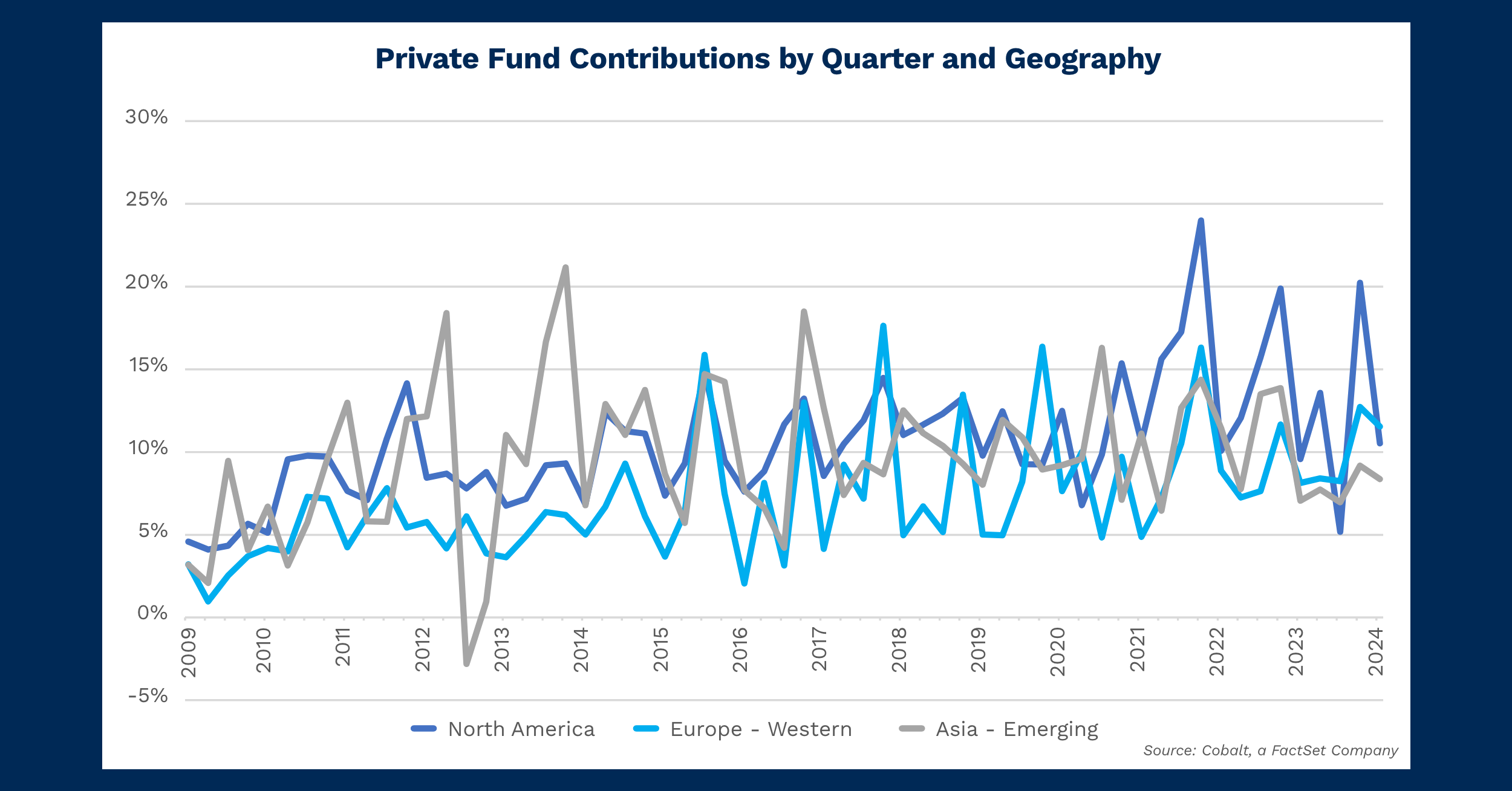Examining Tariff Policy Impacts on Private Fund Contribution Rates
Examining Tariff Policy Impacts on Private Fund Contribution Rates
Recently we examined the impact of Latin America presidential elections—which carry presumptions about candidates’ economic policies—on private market performance. Now we turn to the U.S., where tariffs have remained a common refrain leading up to and after the 2024 presidential election.
Given the long history of tariff enactment, we analyzed the impacts to private fund contributions—specifically, total contributions as a percent of total commitments (but not yet funded) among investors.
- We selected the Asia-Emerging and Europe-Western geographies (both are targets of recent tariff policies) as comparison points with North America.
- The key dates to examine in this timespan are the initiation of tariffs the U.S. imposed on China in Q1 2018 and the end of the tariff conflict between the U.S. and EU in Q4 2021.

Key Takeaways
Looking at the pre-2018 window, there was a trend of overall upward growth in contribution rates across all geographies. That was likely due to private markets’ expansion in the wake of the 2008 financial crisis.
To say the rising tide lifted all geographies makes sense, even with volatility in Asia’s markets at the time, and is likely explained by its smaller sample and developing market historical returns.
From 2018 onward, there was remarkable consistency in contributions among investors across geographies. Europe and Asia displayed a consistent regime of 10% average contribution throughout the timeframe of our analysis. The U.S. hovered slightly above 10% before 2020 but experienced higher volatility in the wake of the pandemic.
That levelling off of contributions reads more as an equilibrium than a suppression due to policy. Given the noise in the chart, it could be argued that any spikes from a change in policy in Q4 2021 European investment per se were clearly not sustained.
Asia similarly does not display much change in private market investment interest throughout the tariff policies since 2018.
Looking Ahead
The U.S. has used tariffs is various forms to achieve its economic objectives for decades, and it appears there is continued support of a tariff policy from the next administration.
Regarding the implications for private market investor contributions, it may be difficult to extrapolate an immediate impact. Given the long investment time horizon, private markets are insulated from temporary policy. But time will tell if any longer-term trends may emerge to change investor sentiment.
Subscribe to our blog:

Is There Geographic Bias in Macro Liquidity Trends in Private Markets?
Is There Geographic Bias in Macro Liquidity Trends in Private Markets? Building on our previous analysis of the role of…

Private Equity Performance: Large Strategies Versus Funds of Funds, Co-Investments, and Secondaries
Private Equity Performance: Large Strategies Versus Funds of Funds, Co-Investments, and Secondaries In private equity, the large strategies of buyouts,…

Comparing Public and Private Market Performance: Does Geography Matter?
Comparing Public and Private Market Performance: Does Geography Matter? We’ve often analyzed various index returns in the public and private…